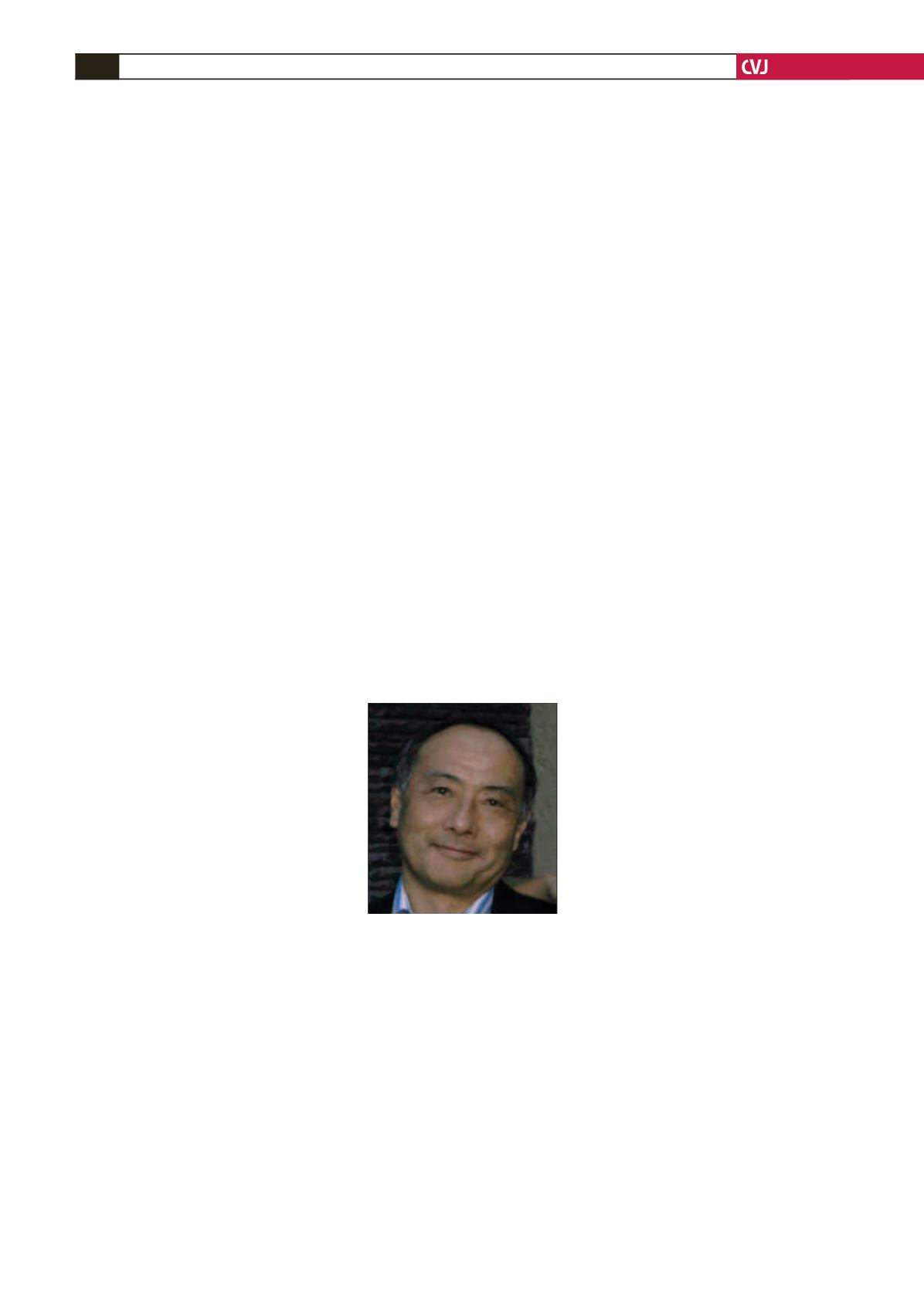
CARDIOVASCULAR JOURNAL OF AFRICA • Vol 23, No 5, June 2012
288
AFRICA
agents were associated with some minor
episodes of hypoglycaemia, while there
was also some transient nausea with
liraglutide’, Prof Omar noted.
Patient satisfaction rates were
higher with liraglutide. After a year,
some sitagliptin patients were switched
to liraglutide; they experienced
improvements in HbA
1c
level as well as
additional weight loss. ‘It is impressive
that patients rated treatment satisfaction
higher with an injectable therapy that cased
mild gastrointestinal (GI) symptoms than
an oral therapy with fewer GI symptoms.’
In the DURATION-2 study, which
compared exenatide once weekly to
sitagliptin or pioglitazone, superior HbA
1c
levels were achieved with exenatide ER.
10
Sixty per cent of patients reached target
on exenatide ER compared with only 30%
on sitagliptin. ‘As expected, weight loss
was also better with exenatide’, observed
Prof Omar. ‘Side-effect profiles were
similar, with no major hypoglycaemic
episodes and only a low frequency of
minor hypoglycaemia.’
So if the GLP-1 analogues are superior
to the DPP-4 inhibitors, how do they
compare against each other? In LEAD-6,
exenatide was compared to liraglutide,
with HbA
1c
level as the primary endpoint.
8
Liraglutide had a significantly greater
effect in lowering HbA
1c
levels than
exenatide. Those switched from the latter
to the former at 26 weeks experienced
further improvement. Weight loss was
similar with both agents.
Where side effects were concerned,
there was transient nausea with
liraglutide, but the rates of nausea were
higher with exenatide and persisted for
longer. ‘Antibody formation was also
much greater with exenatide, because
of its only having a 53% homology
with human GLP-1, compared with
liraglutide’s 97%’, said Prof Omar. ‘This
is significant because these antibodies
may blunt exenatide’s effectiveness.’
DURATION-1 compared exenatide
twice daily to exenatide ER.
11
The latter
was associated with a significantly greater
drop in HbA
1c
levels, with many more
exenatide ER-treated patients attaining the
target of
<
7%. Those switched to the ER
formulation after 52 weeks experienced
further improvements in HbA
1c
levels,
suggesting that exenatide ER is more
efficacious than exenatide twice daily.
Exenatide ER also had a superior side-
effect profile.
DURATION-6 compared exenatide
ER to liraglutide.
12
Liraglutide performed
better, with 60% of patients reaching their
HbA
1c
target level of
<
7%, compared
with 52%. Weight-loss results were also
better with liraglutide. When it came to
side effects, liraglutide was associated
with higher rates of nausea and vomiting,
while injection site reactions were more
common with exenatide ER (published at
present as an abstract only).
‘In conclusion, there is evidence that
HbA
1c
lowering is better with GLP-1
analogues than with DPP-4 inhibitors, and
that of the former, liraglutide is superior
to both exenatide formulations’, said
Prof Omar. GLP-1 analogues, liraglutide
in particular, also performed better in
respect of weight loss. Exenatide ER,
however, was superior overall in terms
of side effects. Patient satisfaction was
higher with the injectable GLP-1 agents
than with the oral DPP-4 inhibitors.
Incretin-based therapies: focus
on clinical effectiveness
Jeffrey Wing, chief physician, professor of
Medicine and clinical head, Department
of Medicine, Charlotte Maxeke Johannes-
burg Hospital
There are many challenges and
contradictions to be overcome where
diabetes is concerned, and we want to
have our cake and eat it, with access to
therapeutic options that are safe, effective,
cheap and free of side effects. This was
the view expressed by Dr Wing.
The first challenge is the numbers.
‘There has been a 98% increase in the
number of diabetics in Africa,
13
and South
Africa has a strikingly high prevalence.
According to the NHLS database, glucose
control is poor in patients treated in the
public sector, and based on the Ampath/
Lancet
databases, the private sector is not
doing any better. Rising rates of obesity,
especially in urban women, are a further
clinical challenge, as one can’t address
glucose control without also looking at
obesity.’
Where contradictions are concerned,
normalising HbA
1c
levels has not yielded
the risk reductions expected. ‘It was
thought that normalisation of HbA
1c
levels would lead to better cardiovascular
outcomes, yet in the ACCORD trial,
intensive glucose lowering led to increased
mortality rates, possibly as a result of
increased hypoglycaemia and highly
significant weight gain’, said Dr Wing.
So obesity needs to be addressed.
Treatment should not aggravate weight
gain, and weight loss would be a bonus.
HbA
1c
levels need to be lowered to < 7%,
and with no hypoglycaemia. Looking at
current drug options, DrWing underscored
that metformin is associated with cardiac
protection. ‘So you would need a very
good reason not to start with metformin.
‘As far as the thiazolidinediones
(TZD) are concerned, rosiglitazone is bad,
pioglitazone less so. The sulphonylureas
do not yield cardioprotection and most
do badly relative to metformin, with the
exception of gliclazide. So there is a
real need for new therapies that lower
glucose levels without weight gain and
hypoglycaemia, while providing the
bonus of cardiovascular protection.’
Dr Wing pointed out that there were
very consistent messages coming through
with regard to the clinical effectiveness
of incretin therapies. ‘Vildagliptin
produces very little hypoglycaemia and
is associated with little or no weight
gain, except when combined with
sulphonylureas. There are convincing
data that exenatide lowers blood glucose,
whether used as monotherapy or in
combination with other agents. There is
impressive weight loss and little or no
hypoglycaemia, except when it is used
together with sulphonylureas.
‘The LEAD studies send the same
message about liraglutide. It produces
impressive reductions in HbA
1c
levels
in various combinations, with similarly
impressive weight loss and little or no
hypoglycaemia except, once again, when
it is combined with sulphonylureas.’
Looking at the composite endpoints
of HbA
1c
lowering, weight loss and
minimising of hypoglycaemia, Dr
Wing assigned the following grades
to the various drugs available. Both
the thiazolidinediones (TZD) and


